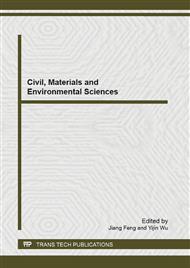p.456
p.463
p.469
p.476
p.482
p.488
p.492
p.497
p.501
Simulation and Optimization of Gasoline Vapor Absorption Separation
Abstract:
The absorption separation method is often applied to recover the gasoline vapor. Several absorbents with good performance, such as dioctyl phthalate, dinonyl phthalate, squalane and AbsFOV-II, were selected to absorb the gasoline vapor from the vapor-air mixture. Based on the simulation software Aspen Plus, the absorption effect of the absorbents on the vapor was evaluated, and some key factors such as the plate number of the absorption tower, the temperature of the absorbents, and the liquid-gas ratio were considered and simulated for the gasoline vapor absorption. The simulation results showed that AbsFOV-II was the most effective absorbent, and the optimized process conditions for the gasoline vapor absorption were as follows: the tower plate number, the absorbent temperature and the liquid-gas ratio were 10, 15 °C and 70 L/m3, respectively, and then the absorption efficiency can be access to 97.5%. The simulation results can provide some guidance for the improvement and optimization of the vapor absorption process.
Info:
Periodical:
Pages:
492-496
Citation:
Online since:
August 2013
Authors:
Keywords:
Price:
Сopyright:
© 2013 Trans Tech Publications Ltd. All Rights Reserved
Share:
Citation:


